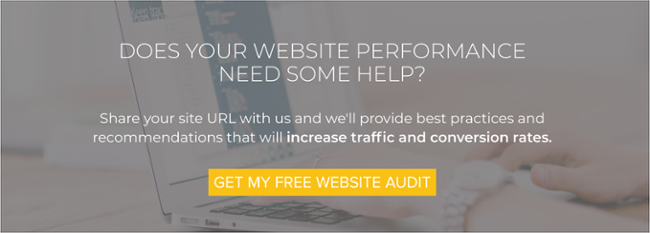4 Ways to Use SaaS Website Design to Attract Potential Clients to Your Website
A compelling website not only puts the best foot forward for your business, but it’s a representation of the quality work you do behind the scenes. As a SaaS company, it’s especially important to showcase your visual standards in addition to the technical standards that you are beholden to for your clients.
1. Don’t bury the lead
Like good journalism, it’s important not to “bury the lead” when creating a strategy for your website. If a visitor has to navigate past your homepage to clearly understand what it is you do, they’ve gone too far.
Make sure it’s obvious as soon as they arrive what exactly you are planning to provide a consumer if they become a client. A resources page can be a great place to host your content pieces (ebooks, sell sheets, infographics, etc.) and a blog page is crucial to presenting your content in a way that positions you as a thought leader for your target demographic. However, displaying or directly linking to your assets throughout the remaining pages of your site (especially your homepage) with CTAs and eye-catching copy, will increase traction on all pages and hold viewers for longer periods of time.
2. Content is king
When it comes to the B2B SaaS space, content is king. By creating content on a regular basis, you’re not only positioning yourself as a thought leader in your industry, but you also provide information that backs up exactly what services you provide for your customers. Highlighting this content in various touch points on your site will ensure lead generating-downloads from your website visitors and help to keep your content as visible as possible.
Another great strategy is to provide free content via pillar pages. This is something we’ve started doing at Accelity in the last year with great success. Pillar pages “ungate” a piece of content you’ve created, displaying it in a single-page design, but also includes a form fill if the user is interested in more information or would like to download a PDF version of the content.
This increases engagement by providing the piece of content upfront for the user without forcing them to provide any personal information. Additionally, this is a great way of showcasing the other potential information you can provide them if they were to download and fill out landing page forms to access the remainder of your resources. This not only builds greater trust with site visitors, but also pushes them toward converting into potential leads as they start to download more of your content.
3. Identify your audience(s)
When developing content for your website it’s crucial to understand who your target audience is. In the B2B SaaS space, you may have more than one target audience. In that instance, make sure to have comprehensive components in your navigation bar, as well as immediately on your homepage so they can quickly determine which dedicated page you’ve tailored for them.
When targeting content for your audience you want to think like they will think when visiting a site for potential lead generating content ideas. Siloing your content using navigation drop-downs as well as designing your homepage to serve as an overview landing page for the key components of your site (who we are, who we work with, about the team) can allow you to both better organize your site map and arrange your content by topic, buyer persona or industry keywords. By doing this, you ensure you make each visitor feel as if they are your perfect fit.
4. Back up your work
When it comes to a great website it’s important to back up your work. The best way to do that is to have high-quality testimonials from existing clients or past clients that can provide third-party context for the quality of work that you do. Having trusted clients give you great reviews not only boosts the interest of website visitors but is a great way to speak to your services without it coming directly from you. Testimonials can be shared as text, whitepapers, or as a video. If you’re able to create a video testimonial, this is perfect content to place on your homepage to ensure you catch your visitor’s eye right away. Additionally, you can compile all of your testimonial content on a results page to showcase a comprehensive view of what clients can expect from your services.
Remember to display who you are and what you provide first, so as soon as someone lands on your site they’re aware if they are a fit or not.
Both internally on your blog page, and externally as downloadable content on a resources page, content is king. The more content you create boosts your standing as a thought leader in your industry, increases your SEO and funnels more leads into your pipeline via form fills. So, create more of it! When creating your content be sure to target a select audience. Your website visitors want to feel like they know where to go and what to see in order to get a grasp on how to start working with you.
Once you start seeing success, record it. Engage your existing clients in conversations about the results they’ve seen from your services and proudly display those on your website. The overall look and feel will vary depending on your industry, but utilizing these tips in combination with a clean, sleek website design will move your site toward success.
Utilizing these four key mindsets when planning your B2B SaaS website can help you increase engagement and boost your visual appeal for potential prospects.


